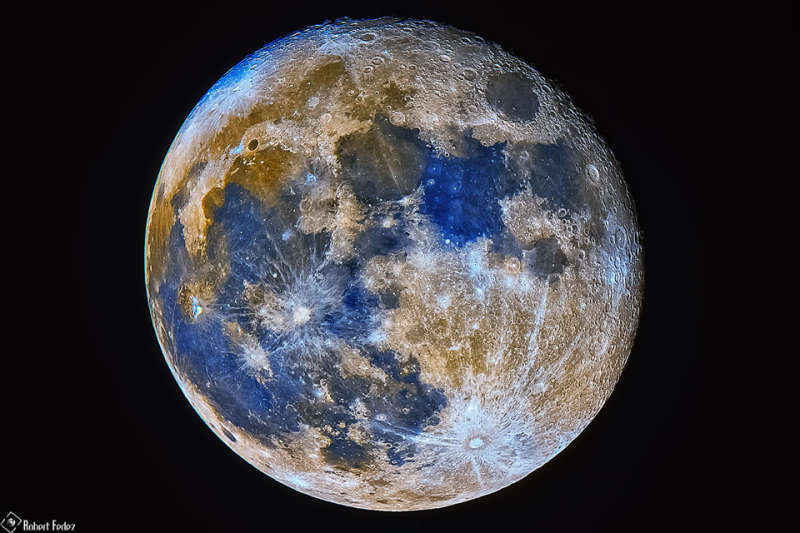Credit & Copyright: Robert Fedez
Explanation:
The Moon is normally seen in subtle shades of grey or
gold.
But small, measurable
color differences have been
greatly exaggerated to make this telescopic, multicolored,
moonscape captured during the Moon's full phase.
The different colors are recognized to correspond to
real differences in the chemical makeup of the
lunar surface.
Blue hues reveal
titanium rich areas while orange and purple colors
show regions relatively poor in titanium and iron.
The familiar
Sea of Tranquility, or
Mare Tranquillitatis, is the blue area toward the upper right.
White lines radiate across the orange-hued southern
lunar highlands from 85-kilometer wide
ray-crater Tycho at bottom right.
The full moon that occurred earlier this month could be counted as a
seasonal blue moon because it was, unusually, the
third of four full moons
to occur during northern summer (and hence southern winter).
The featured 272-image composite demonstrates that the
full Moon is always blue, but usually not blue enough in hue to
ooh.
Almost Hyperspace:
Random APOD Generator
1999 2000 2001 2002 2003 2004 2005 2006 2007 2008 2009 2010 2011 2012 2013 2014 2015 2016 2017 2018 2019 2020 2021 2022 2023 2024 2025 |
Yanvar' Fevral' Mart Aprel' Mai Iyun' Iyul' Avgust Sentyabr' Oktyabr' Noyabr' Dekabr' |
NASA Web Site Statements, Warnings, and Disclaimers
NASA Official: Jay Norris. Specific rights apply.
A service of: LHEA at NASA / GSFC
& Michigan Tech. U.
|
Publikacii s klyuchevymi slovami:
Moon - color - Luna - cvet
Publikacii so slovami: Moon - color - Luna - cvet | |
Sm. takzhe:
Vse publikacii na tu zhe temu >> | |
